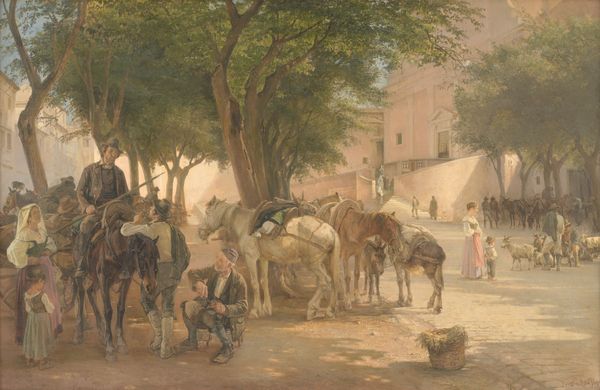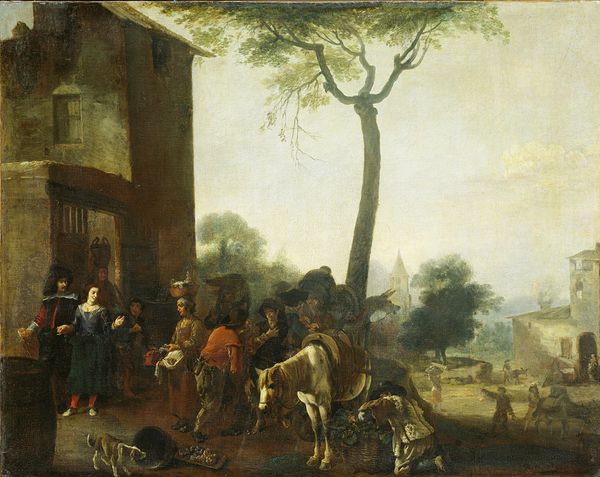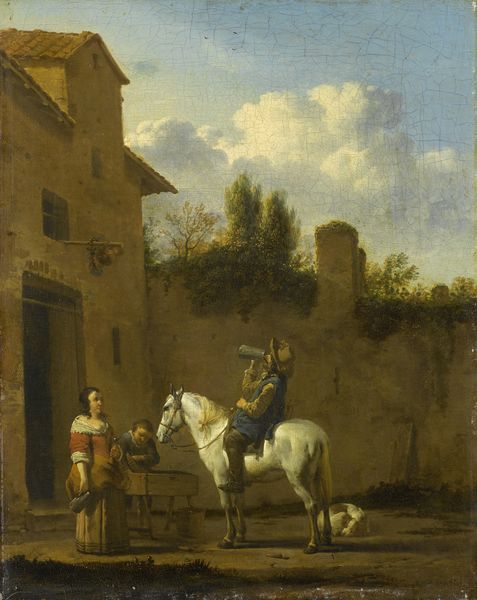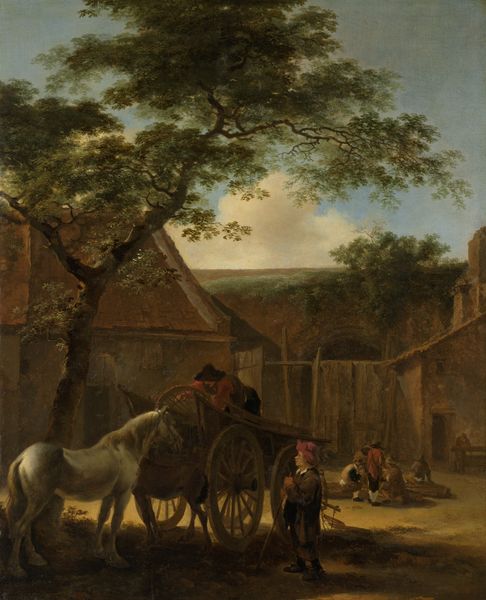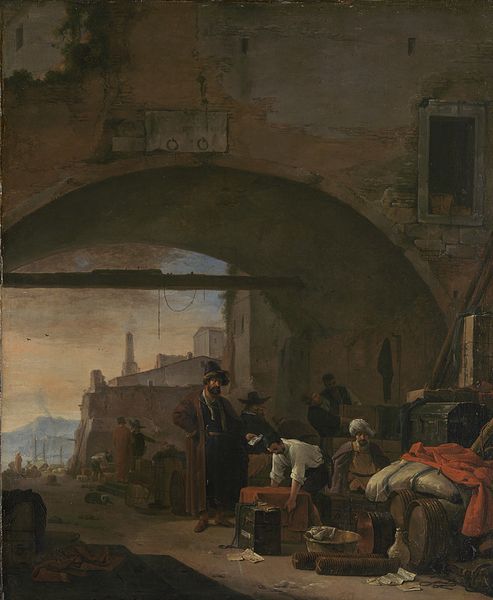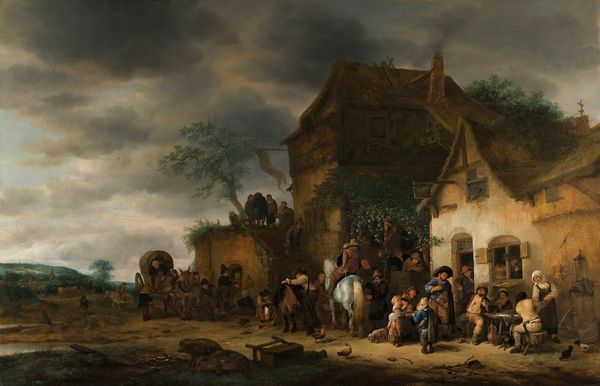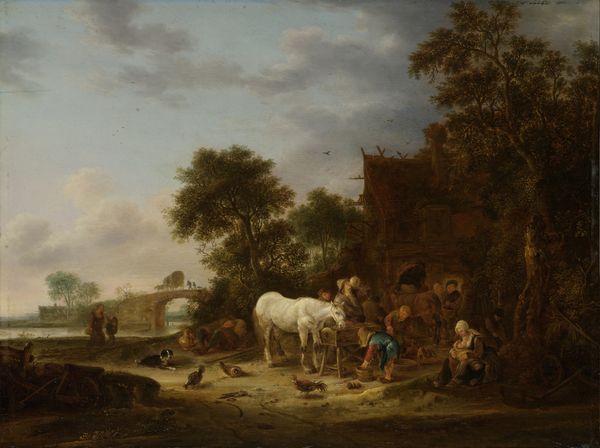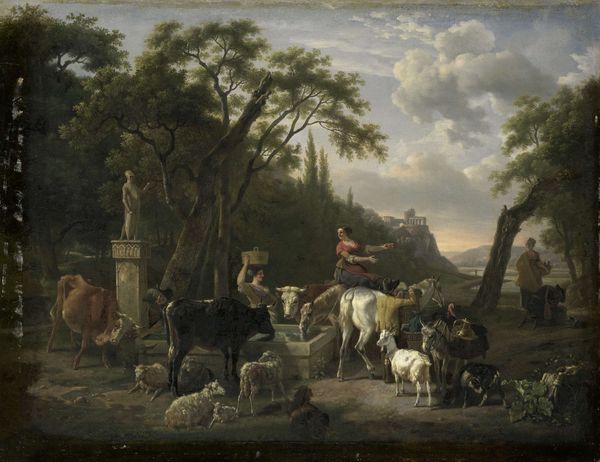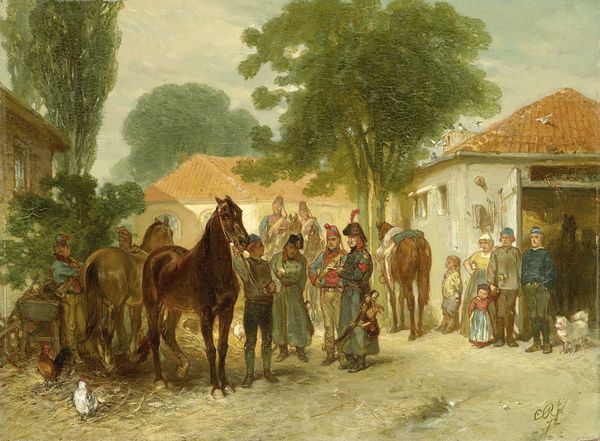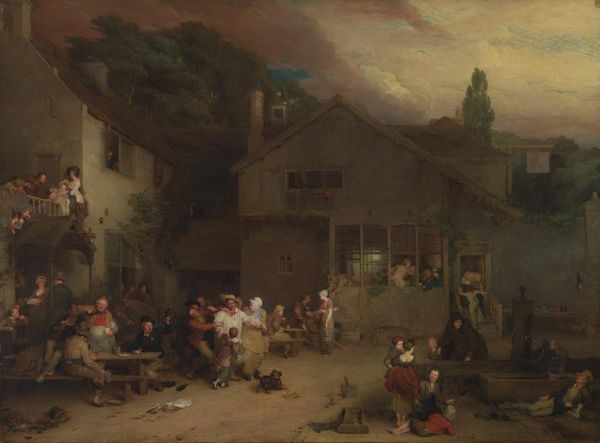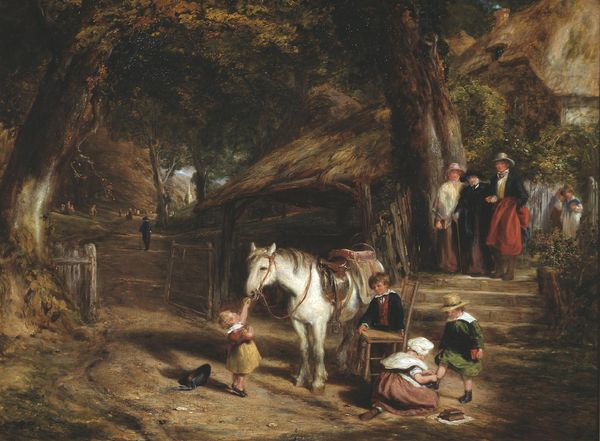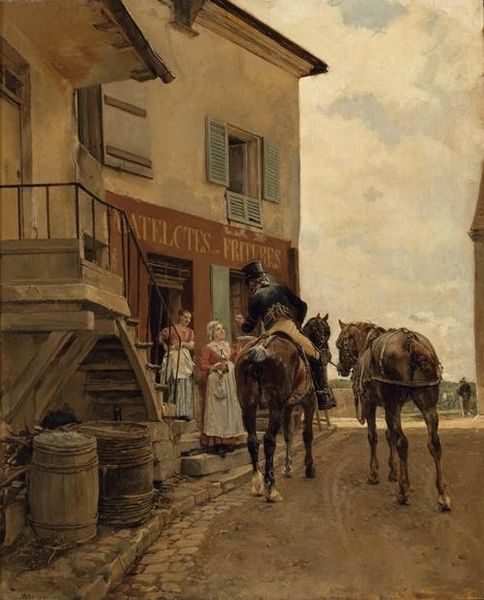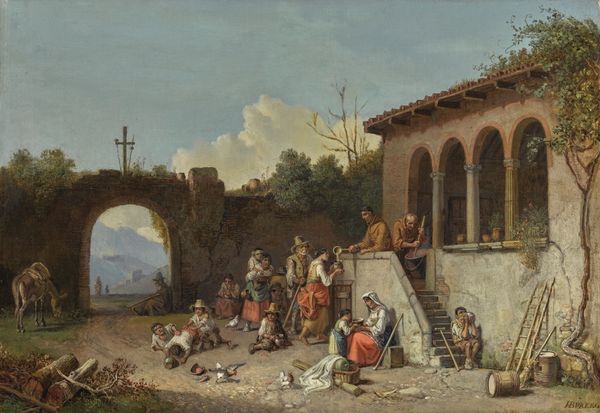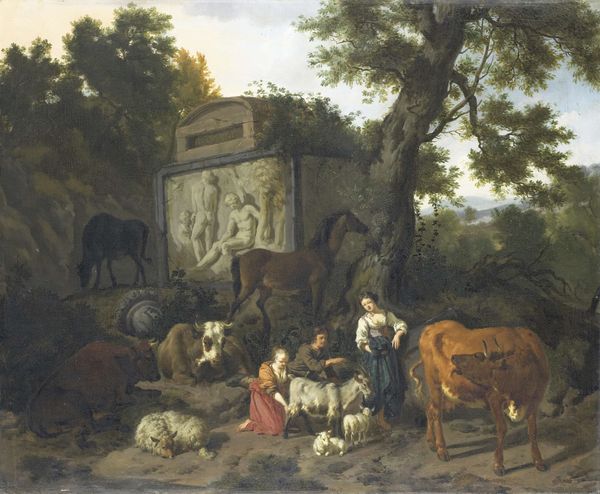
oil-paint
#
baroque
#
oil-paint
#
landscape
#
painted
#
oil painting
#
genre-painting
#
realism
Dimensions: height 34 cm, width 43.5 cm
Copyright: Rijks Museum: Open Domain
Curator: Welcome, everyone. We're standing before Karel du Jardin's "Muleteers at an Inn," painted circa 1658-1660. This oil painting is part of the Rijksmuseum's collection, offering a glimpse into 17th-century Dutch genre painting. Editor: My initial feeling is a sense of pause. There's a quietness in the everyday scene; the warmth of the earthy tones contrasts with the activity of the travelers taking respite, making the painting very inviting. Curator: Indeed. Genre paintings like this often romanticized rural life and commerce, creating idealized images for urban viewers. The presence of muleteers suggests the significance of trade and transportation in this era. Du Jardin highlights their temporary halt to underline his attention to work and public life. Editor: And look at how class and labor are depicted, as well. The figures engaged in what seems like a transaction, possibly haggling over prices. These little everyday exchanges form a complex web of social and economic interactions that resonate beyond this single captured moment. How are their power dynamics depicted, and how does it speak to the socio-economic framework in the Netherlands during that time? Curator: That is something interesting. Dutch Golden Age painting was deeply embedded within systems of patronage and a booming art market. Consider that such an intimate look into a possible everyday event would also include specific political agendas. And it should come as no surprise. What makes it unique is how du Jardin captured it with his skills of Realism and Baroque, and the overall mood and scene that can resonate with different audiences to this day. Editor: This focus reminds us to consider the artwork as a visual artifact deeply enmeshed in a specific cultural, social, and historical setting, rather than an object merely to be observed. Thank you! Curator: Precisely. Exploring that wider network allows us to question some of the assumptions within which those rural tropes developed and were reinforced. It’s fascinating to consider the continuing presence of similar idyllic rural scenarios in contrast with social reality across artistic traditions!
Comments
rijksmuseum about 2 years ago
⋮
With a few carefully chosen motifs, Dujardin is able to transport us to Italy – to the courtyard of an inn, where muleteers with their laden beasts have stopped to rest. It is warm and the locals have sought shade to escape the heat. Even the little donkey stands in the shadow cast by the larger animals. Above the door hang two empty fiaschi, large wine bottles covered with raffia. All of this conjures up memories of the south.
Join the conversation
Join millions of artists and users on Artera today and experience the ultimate creative platform.
